Weese-Designed Shadowcliff Prepares for its next 100 Years
Cantilevered from the side of a limestone cliff in Door County is a four-sided, mostly glass structure designed by Harry Weese in 1969. The building had fallen into disuse and needed major repairs when an impassioned crew set off in 2012 to restore history with the future in mind.
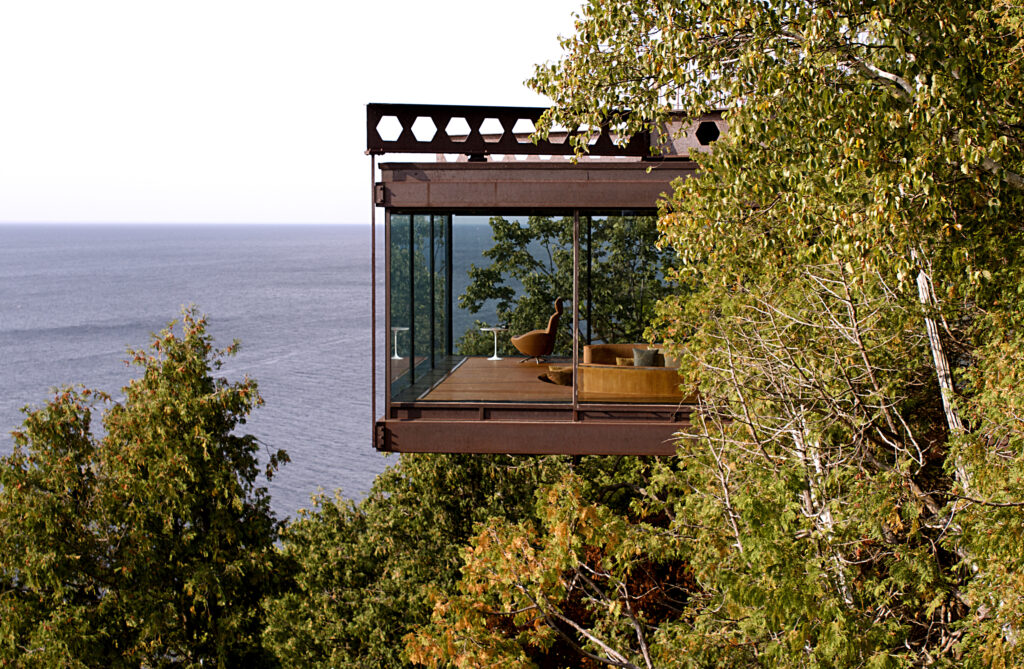
In my experience, it is not uncommon for a single photo of the “cliff house” to make jaws slacken and eyes grow wide, an appreciative grin following soon behind. When Minnesota-based Interior Designer Ruth Johnson was brought onto the restoration process in 2012, current owner Jim Gearen simply had to send her a photo in an email, no text.
“There’s this little bridge you have to cross between the edge of the cliff and the front door. So Jim just handed me the key and said, ‘I think you should experience this on your own first before I walk in with you.’ The minute I opened that door and got a glimpse of the lake expanding into the sky and the teak… I got goosebumps.”
– Ruth Johnson, Ruth Johnson Interiors
Jim himself has a long, almost poetic history with the property. Growing up he spent summers just a few doors down from the Wesse-designed space. Later on, he would take his daughter sailing along the bay’s shoreline, and they would stare up as they passed, dreaming, as I’m sure many did, the impossible dream of owning that odd little cliff oasis.
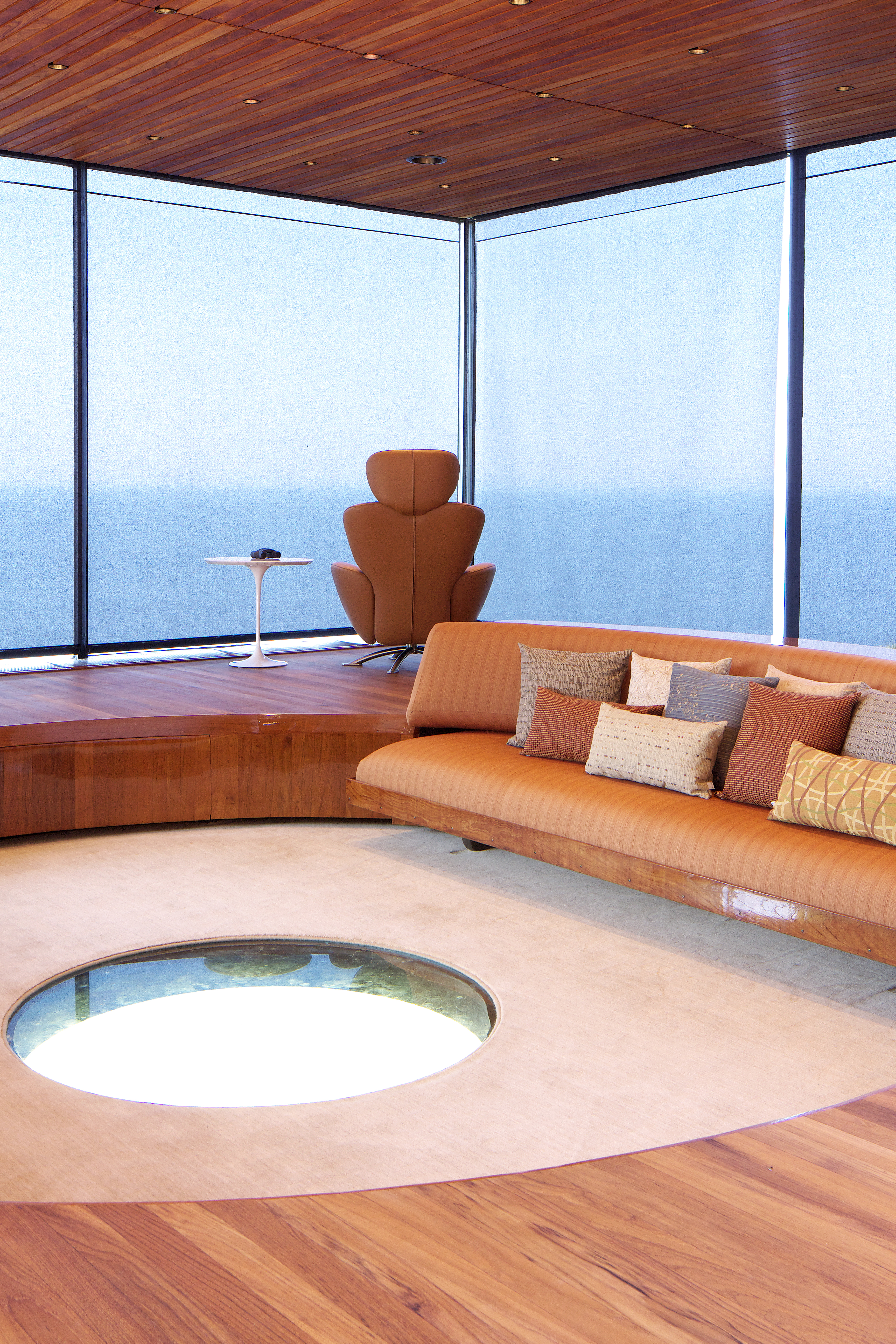
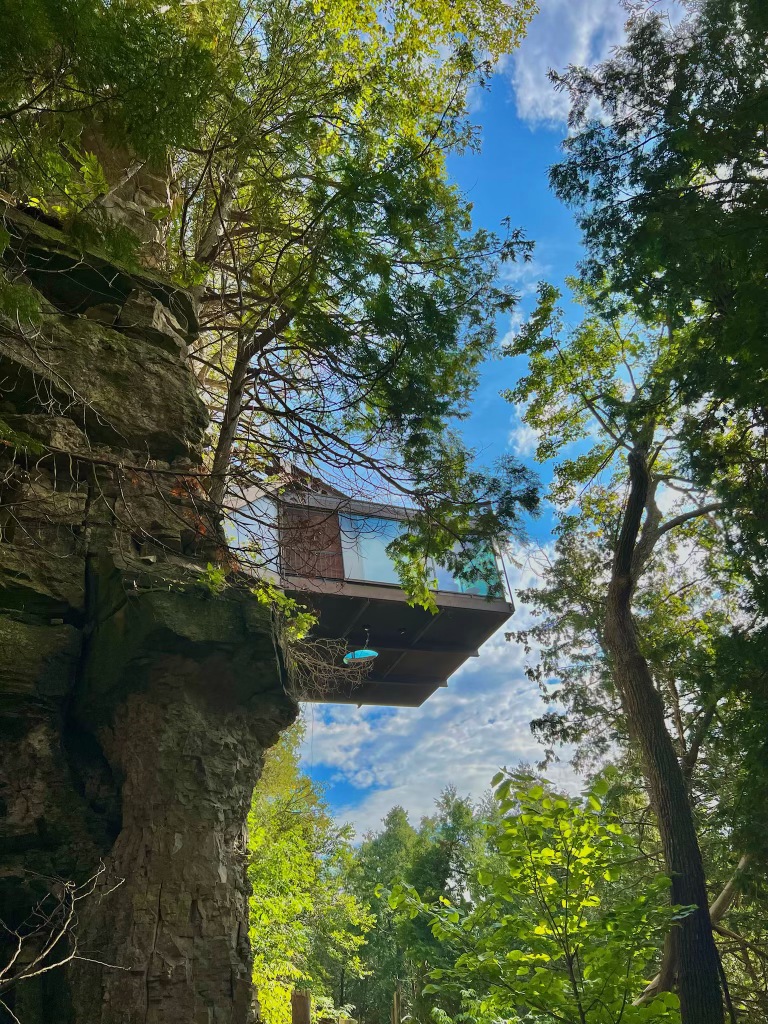
Illinois architect Harry Weese originally designed Shadowcliff as a summer office for his friend, railroad tycoon and presidential advisor Ben W. Heinemen. Heinemen insisted the interiors look and feel like a yacht, pushing out over open water. The original design even included water-ready weather and navigational instruments in teak-covered wall panels installed by Palmer Johnson Yachts, originally located in Sturgeon Bay.
Heinemen, CEO of Northwest Industries, Inc., mostly used the office each August when he and his family displaced themselves to Door County to avoid the summer heat in Chicago. Shadowcliff sits on a larger property shared by a main house that served as the family’s summer residence. According to a court document from Heineman v. Comm’r of Internal Revenue (1984), Heinemen tried to use the main house as his home office during the summer months but found himself distracted.
“From 1959 until 1969, the petitioner used part of the main house at Sister Bay as a makeshift office. However, this arrangement was not satisfactory. His work was interrupted by social visitors to the house and by telephone calls. In 1969, the petitioner had a separate office built on the Sister Bay property at a cost of approximately $250,000.”
– Heineman v. Comm’r of Internal Revenue, 82 T.C. 538, 540 (U.S.T.C. 1984)
In addition to seeking solace from ‘social visitors,’ hanging his office off the cliffside was also key to protecting the expansive view available from the main house.
And the court case? Heineman wrote his new, now more peaceful, office off on his personal taxes, was sued by the IRS, and won. Thanks to Heineman and Shadowcliff, we can all now write our home offices off on our taxes.
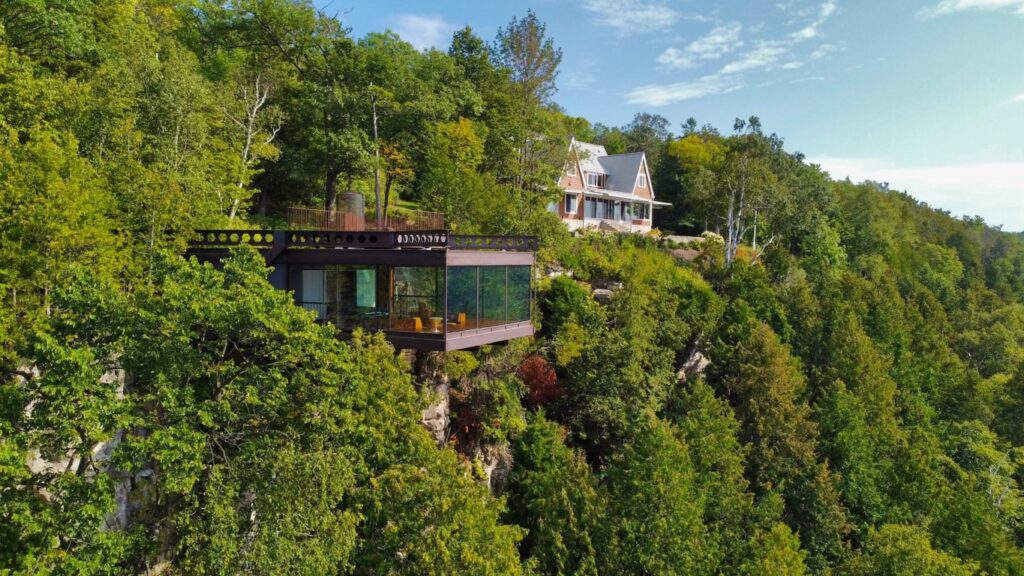
By the 1980’s, the foundation had begun to shift, destabilizing the property and raising alarm bells about its safety.
When originally built, the Cor-Ten double cantilever steel frame from which the entire structure hangs was anchored by massive blocks of concrete poured in the dead of a Wisconsin winter. As the limestone wall fractured over time, these concrete counterweights – which were heavier than the building itself – began to sink, incrementally tipping the frame upwards and backwards.
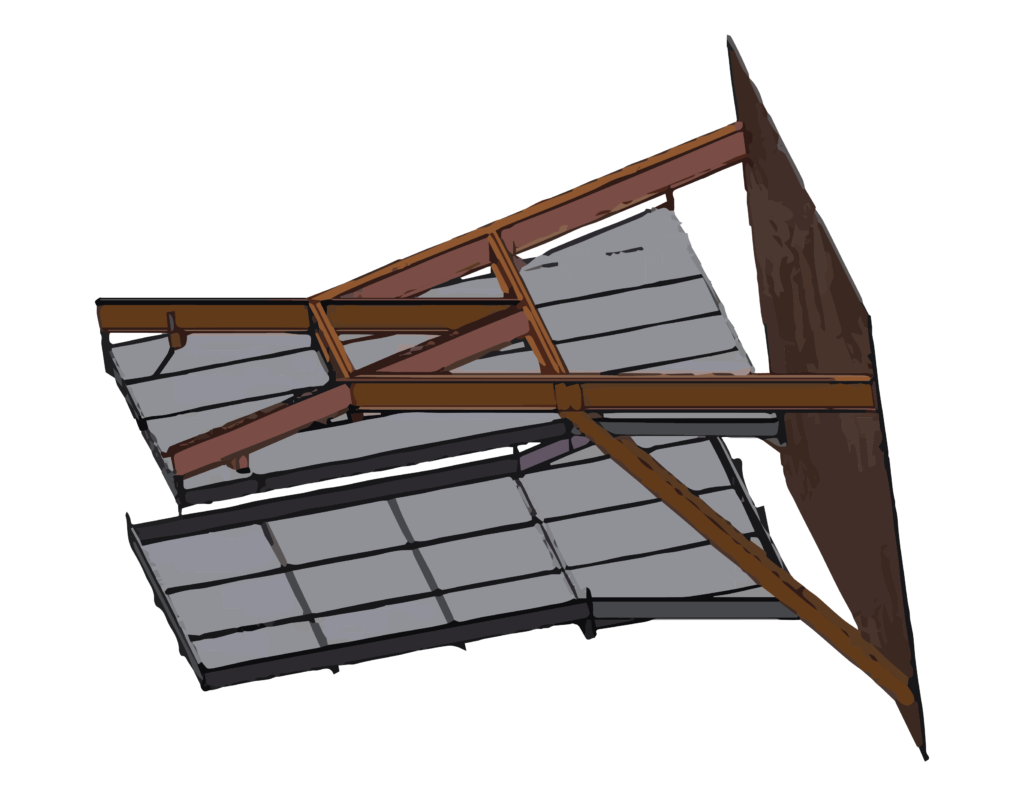
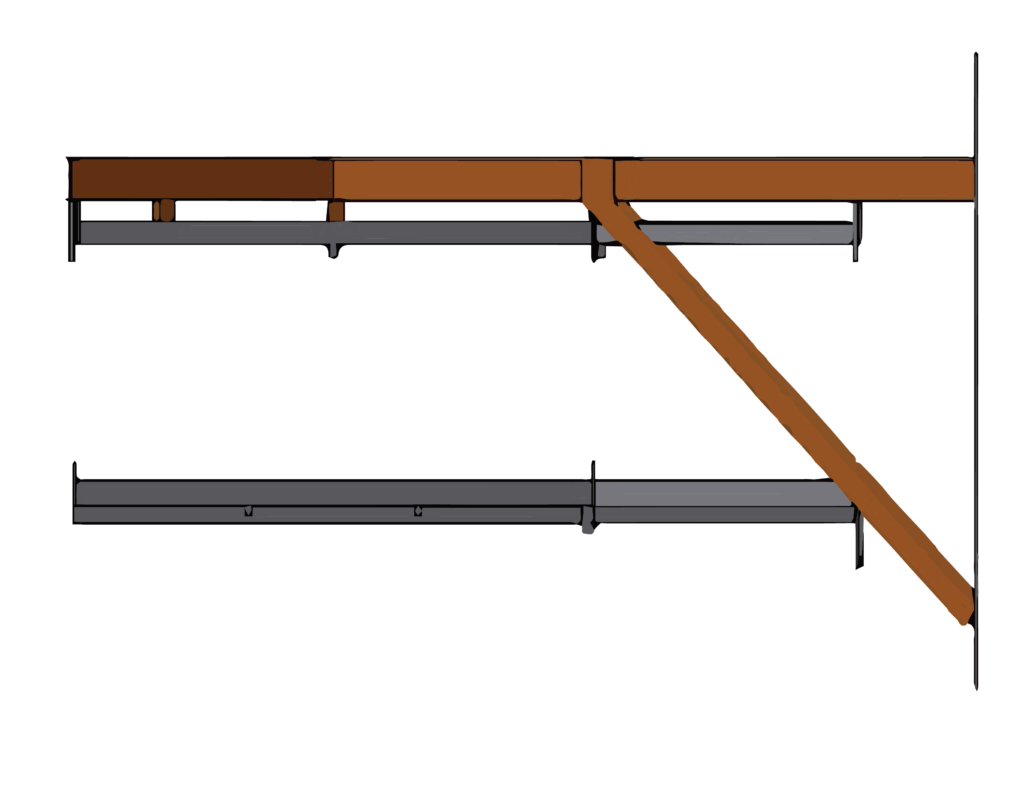
Vaughan Weeks of Novus Technical Services was the engineer brought on board by Opus Architecture during the 2012 restoration project. With information provided by a geological engineer from GZA GeoEnviornmental, his first job was to re-level the concrete counterweights by pumping grout into the limestone fissures throughout the cliffside. The concern was that at a pumping pressure of about 10psi, the house would begin tipping into the lake. The grout pumpers carefully tracked the pumping pressure while Weeks monitored the room through dozens of levels set up throughout the space, so any deviation, including asymmetric tipping, would be detected.
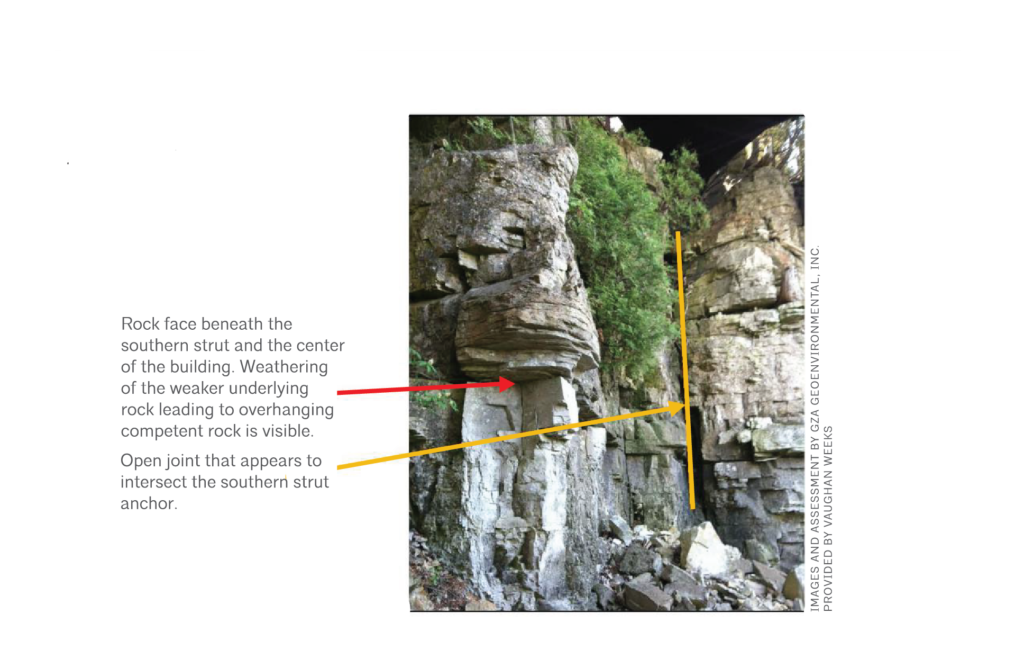
In what amounted to essentially caulking the cliff, this process also limited the ability of water to seep down into the rocks, preventing future fissures from forming and elongating the life of the structure.
Then Weeks’ analysis discovered a high stress point in the web of the southern beam near the cliff face. Examination of the actual beam discovered spalling of the usually tight Cor-Ten steel corrosion, almost exactly where the model detected high stress. Concerned about low cycle fatigue failure over time, a web stiffener was designed using FEA and installed on the beam.
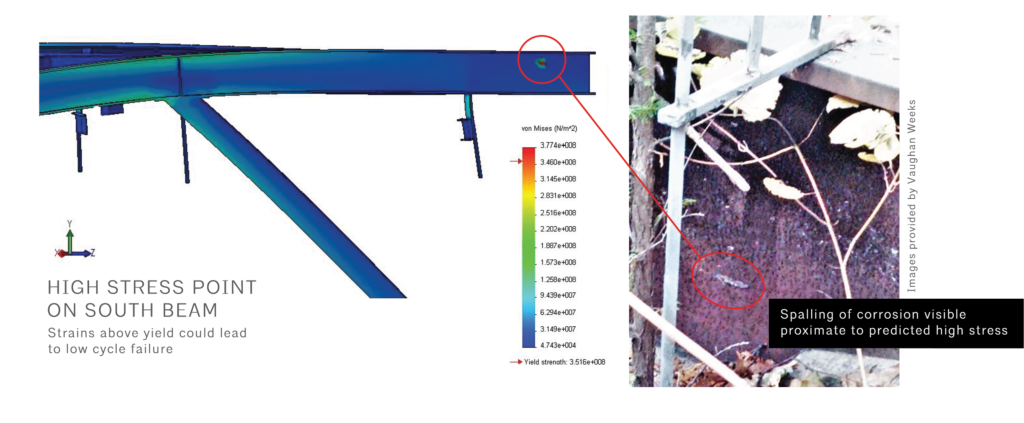
Weeks also left a means of catching any structural shifting in the future by installing a gauge bar on each of the main beams with an inclinometer accurate to 1/1000 of a degree.
Maintaining the history of this building while planning for its future was always part of Jim Gearen’s restoration plan.
“Everybody who was part of the team understood that we were working on a real gem. The mantra was: we’re redoing this for the next 100 years, and so do the right thing for the next 100 years.”
Jim Gearen, current owner

